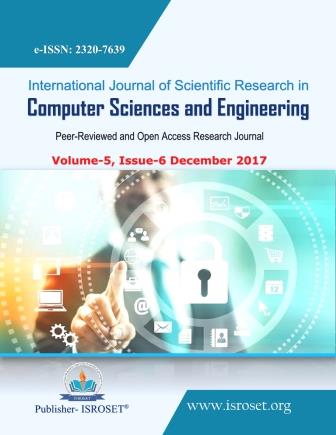Peer 2 Peer System Using Sort
Keywords:
peer to peer system, trust, management, reputation, securityAbstract
Peer 2 peer system act as both clients as well as server. This system exposes them to malicious activity. Without central server this system can share their files between them easily. To decrease the attacks of malicious peer the system builds trust between each other. A good peer always gives fair recommendations after uploading authentic files. Both service as well as recommendation attacked performed by malicious peer. Both service based attack as well as recommendation based attack are detect by Self Organizing Trust Model (SORT). To learn trust information of other peer, Peer send query to other peer that interacted in past. Any peer wants to download or upload file from another peer. So peer get recommendation from other node, Peer decides that the node is good or malicious based on recommendation. Peer does not interact with node if it is found malicious but also separate the malicious node from the network. If node found good peer then both can interact with each other. A separate history of interactions for each acquaintance is stored by peer.
References
Ahmet Burak Can and Bharat,‟A Self-Organizing Trust Model for Peer-to-Peer Systems‟IEEE Trans.Dependable and Secure Computing,vol 10, No.1, 2013.
J. U. Duncombe, “Infrared navigation—Part I: An assessment of feasibility,” IEEE Trans. Electron Devices, vol. ED-11, pp. 34-39, Jan. 1959
Aberer.K and Despotovic.Z “Managing Trust in a Peer-2-Peer Information System” Proc. 10th Intl Conf. Information and Knowledge Management (CIKM), (2001),.
Kamvar.S, Schlosser.M, and Garcia-Molina.H„The (Eigentrust) Algorithm for Reputation Management in P2P Networks‟ Proc. 12th World Wide Web Conf. (WWW), ,(2003).
R.S.Sinju and C.Felsy, “ Managing Trust Relationship in Peer to Peer System” vol.2,Issue-2,pp-29-36,April-June 2014.
A. Abdul-Rahman and S. Hailes, “Supporting Trust in Virtual Communities,” Proc. 33rd Hawaii Int’l Conf. System Sciences (HICSS), 2000.
L. Mui, M. Mohtashemi, and A. Halberstadt, “A Computational Model of Trust and Reputation for E-Businesses,” Proc. 35th Hawaii Int’l Conf. System Sciences (HICSS), 2002.
A. Jøsang, E. Gray, and M. Kinateder, “Analysing Topologies of Transitive Trust,” Proc. First Int’l Workshop Formal Aspects in Security and Trust (FAST), 2003.
E. Terzi, Y. Zhong, B. Bhargava, Pankaj, and S. Madria, “An Algorithm for Building User-Role Profiles in a Trust Environment,” Proc. Fourth Int’l Conf. Data Warehousing and Knowledge Discovery (DaWaK), vol. 2454, 2002
Z. Despotovic and K. Aberer, “Trust-Aware Delivery of Composite Goods,” Proc. First Int’l Conf. Agents and Peer-to-Peer Computing, 2002.
H. Yu, M. Kaminsky, P.B. Gibbons, and A. Flaxman, “Sybilguard: Defending against Sybil Attacks via Social Networks,” ACM SIGCOMM Computer Comm. Rev., vol. 36, no. 4, pp. 267-278, 2006.
N. Tran, B. Min, J. Li, and L. Subramanian, “Sybil-Resilient Online Content Voting,” Proc. Sixth USENIX Symp. Networked Systems Design and Implementation (NSDI), 2009.
K. Hoffman, D. Zage, and C. Nita-Rotaru, “A Survey of Attack and Defense Techniques for Reputation Systems,” ACM Computing Surveys, vol. 42, no. 1, pp. 1:1-1:31, 2009.
K. Aberer, A. Datta, and M. Hauswirth, “P-Grid: Dynamics of Self- Organization Processes in Structured P2P Systems,” Peer-to-Peer Systems and Applications, vol. 3845, 2005.
Downloads
Published
How to Cite
Issue
Section
License

This work is licensed under a Creative Commons Attribution 4.0 International License.
Authors contributing to this journal agree to publish their articles under the Creative Commons Attribution 4.0 International License, allowing third parties to share their work (copy, distribute, transmit) and to adapt it, under the condition that the authors are given credit and that in the event of reuse or distribution, the terms of this license are made clear.







